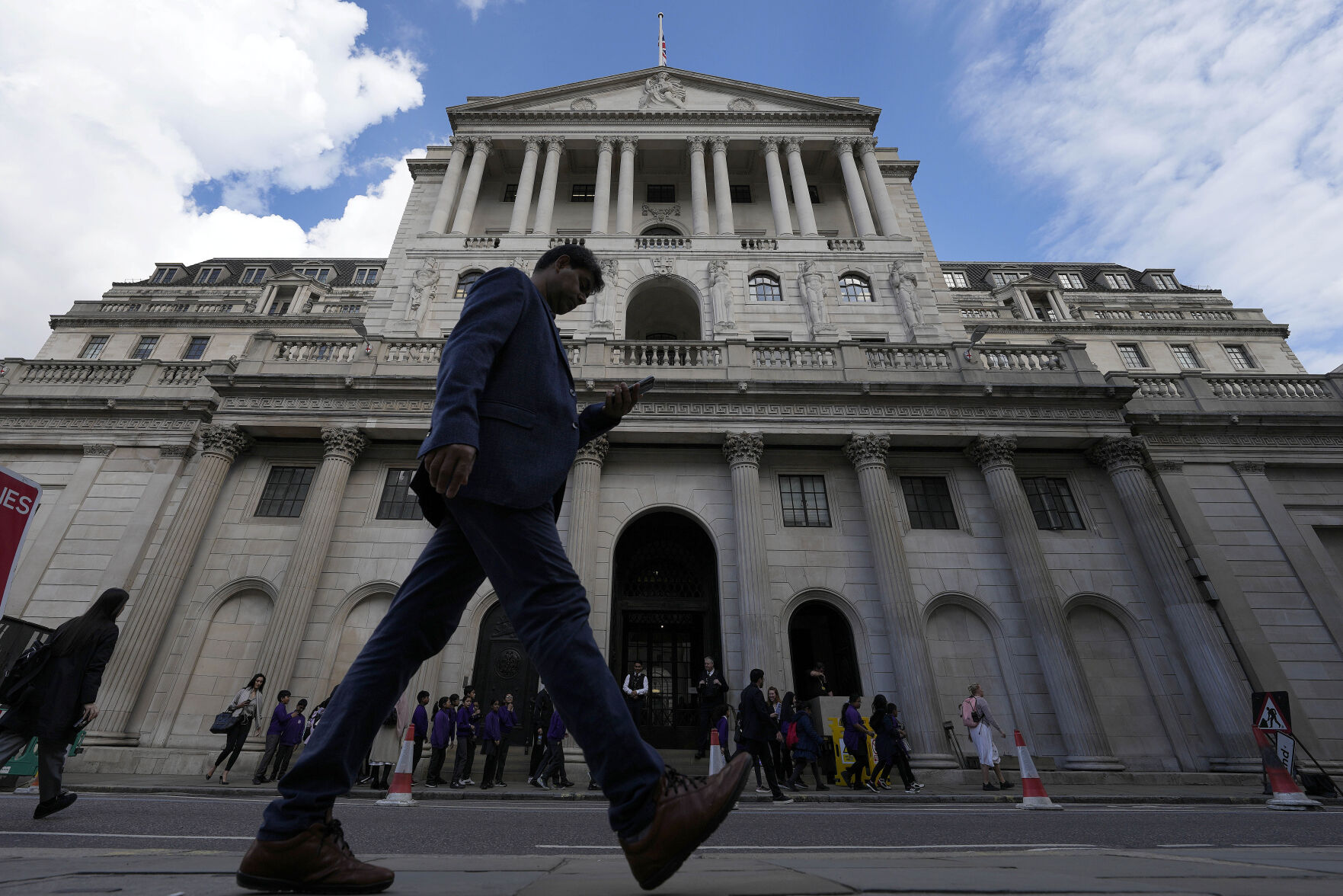LONDON — The Bank of England raised interest rates to their highest level since late 2008 as it continues to combat stubbornly high inflation in the U.K.
The decision today by the bank’s nine-member Monetary Policy Committee to lift its main interest rate by a quarter of a percentage point to 4.5% was widely anticipated in financial markets. The increase was its 12th in a row. Just two members of the panel voted to keep interest rates unchanged.
Like other central banks around the world, the Bank of England has sought to keep a lid on inflation, which over the past year has been fueled by Russia’s invasion of Ukraine. That sent energy prices soaring, a development that then led to price increases across a wide array of goods and services.
The Bank of England started raising interest rates in late 2021 from a low of 0.1% in order to keep a lid on price rises that were first largely stoked by bottlenecks resulting from the lifting of coronavirus lockdown restrictions and subsequently by Russia’s war in Ukraine. Higher interest rates help lower inflation by making it more expensive for households and businesses to borrow, meaning they potentially spend less, thereby reducing upside demand pressure on prices.
The bank, which is tasked with keeping inflation at around 2%, said that inflation would likely halve from current levels to around 5% by the end of this year. Inflation will inevitably fall as the year-on-year energy price comparisons diminish.
Though the energy price backdrop will help lower inflation, the bank said food prices have stayed higher for longer than expected, partly because of Russia’s war in Ukraine and poor harvests in some European countries. As a result, it said inflation is expected to decline less rapidly this year than previously thought.
The interest rate hike will pile more pressure on borrowers, particularly those who have mortgages that track the bank’s headline rate. Many homeowners will be cushioned from the recent increases because they fixed their mortgages when interest rates were ultra-low during the coronavirus pandemic. However, those whose fixed rate terms expire over the coming months will face much higher borrowing rates when they look to lock in new deals.
The bank also said the British economy is likely to avoid falling into a recession this year — two consecutive quarters of negative growth — partly as a result of the recent fall in energy costs, a pickup in economic activity in China following the ending of its zero-COVID policy and a more benign environment in Europe than anticipated.
Despite the improved growth outlook, the bank isn’t expecting a big rebound.
“The level of growth is still weak, let’s be honest,” Bank of England Gov. Andrew Bailey told journalists following the rate decision.
Bailey said the bank was “not giving a directional steer” as to whether interest rates will rise again. Financial markets think there could be possibly one or two quarter-point increases in this current cycle, though much will depend on the speed at which inflation declines over the coming months.
“We are still minded to think that today’s hike will be the last of this tightening cycle,” said Luke Bartholomew, senior economist at asset management firm abrdn. “But the risks are skewed heavily towards higher rates, and inflation will need to behave itself over the coming months if policy is indeed to remain on hold at these levels.”


